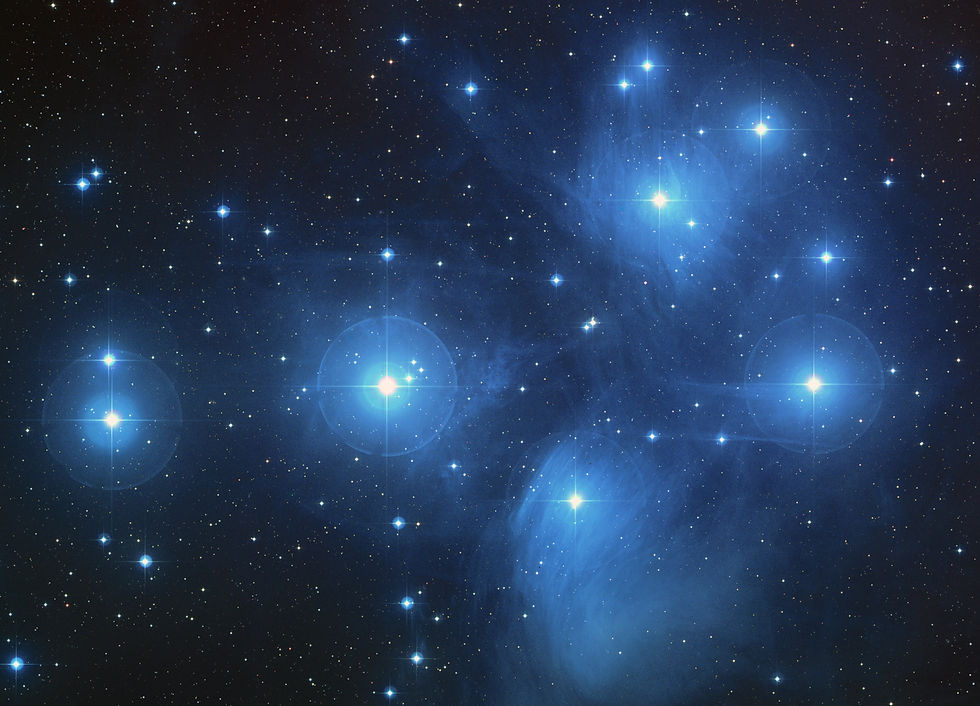Whats Springing Up in the Sky this Spring!
- Luke

- Feb 16, 2023
- 3 min read
Spring is just around the corner! In 2023, the first day of spring will be March 20th. Spring is a wonderful time of year for astronomy and stargazing, with the warmer weather and longer days providing ideal conditions for observing the night sky. Whether you're a seasoned astronomer or a beginner, there are plenty of celestial events and phenomena to look out for this season.

The first day of spring is determined by the vernal equinox. The vernal equinox is the moment when the the Sun is directly over Earth's equator, resulting in equal amounts of daylight and darkness. This marks the beginning of the spring season in the Northern Hemisphere and the autumn season in the Southern Hemisphere.
There's lots to enjoy in the sky this spring from meteor showers, star clusters, galaxies, to planetary alignments, there's something for everyone to enjoy. Here are some of the highlights to look out for:
The Full Worm Moon: On March 7th, the Full Worm Moon will light up the night sky. This is the final full moon of the winter and gets its name from the earthworms that emerge from the soil as the weather starts to warm up. It's a great opportunity to observe the full Moon and take a final moon lit hike/snowshoe this winter.

mile high moon over Denver/Sloans lake
Mars: The Red Planet will be visible high in the sky in the early evening hours on through midnight, setting in the west as the night progresses. Look for a reddish-orange dot that is brighter than most stars. for more information check out our post covering mars this season: https://www.astrotours.org/post/mars-returns

Mars
Jupiter: This gas giant is still visible in the early evening sky, with Jupiter shining brightly in the southwest. Jupiter is best viewed through a telescope or binoculars, which can reveal the red stripes (maybe even the great spot) and the rapidly moving moons. look at Jupiter in a telescope once it's dark enough to see it then check back on it in an hour and you will be able to witness the moons moving around the planet. learn more in our post about Jupiter here: https://www.astrotours.org/post/by-jove-1

Jupiter and four of its moons.
Venus: Venus will be visible in the early evening hours in the west, just after sunset. Look for Venus, low on the horizon in the west. In a telescope or small binoculars you will be able to see the phases of Venus much like the phases of the moon. you can track Venus's phases and how they change if you check back on Venus over the next few months. learn more about Venus in our blog post here: https://www.astrotours.org/post/venus-1

Phases of Venus
The Seven Sisters: Also known as the Pleiades, is a prominent open star cluster located in the constellation Taurus. The cluster is easily visible to the naked eye, with six or seven (depending on how good your eyes are) of the brightest stars visible in a compact group. learn more about the folklore of the seven sisters in our post here: https://www.astrotours.org/post/let-s-get-sirius-about-orion

Hubble image of the 7 Sisters
The Beehive Cluster: Also known as M44, this open star cluster is located in the constellation Cancer and is visible with the naked eye in a dark sky. Find Cancer using a star chart or a phone star app and look for a fuzzy patch of light containing dozens of stars.

M44 in a telescope
The Orion Nebula: This bright, colorful cloud of gas and dust is located in the constellation Orion and can be seen with the naked eye in a dark sky. It is best viewed through binoculars or a telescope, which can reveal its intricate structure and the stars forming within it.

How to find the Orion Nebula
The Lyrid meteor shower: This annual meteor shower peaks around April 22nd and is known for its bright, fast-moving shooting stars. The Lyrids are caused by debris from Comet C/1861 G1 Thatcher, which burns up in Earth's atmosphere. We have a program on April the 22nd to observe this shower if you would like to book it visit: AstroTours.org/book
To get the most out of your stargazing experience, make sure to find a dark location away from city lights, and give your eyes time to adjust to the darkness. It's also a good idea to bring along a red flashlight to help you navigate and read star charts without disrupting your night vision.
Spring is an exciting time for astronomy and stargazing, with plenty of opportunities to explore the wonders of the night sky. So grab your telescope or binoculars, find a comfortable spot, and enjoy the show or enjoy the show with us on one of our events book now at AstroTours.org/book


.png)



Comments